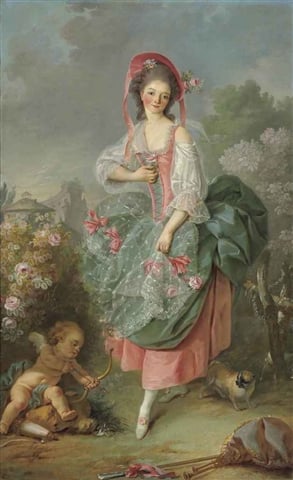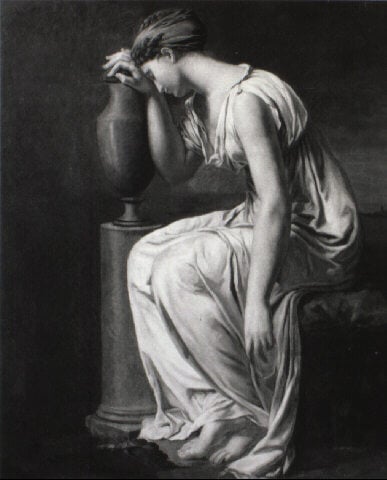Auctions
The Romance of Romanticism
A survey of Jacques-Louis David and the Romantic ideals of individuality.

A survey of Jacques-Louis David and the Romantic ideals of individuality.

Erica Trapasso

Romanticism describes the era of the 19th century in which artists and poets strove for individuality and originality instead of conformity. Romantics rejected the traditional aesthetic values of the 18th century and classically inspired art. The styles and methods used in the Romantic era are anything but idealized, balanced, and calm; in other words, the total opposite of rococo and neoclassical art.
Artists of the time began to substitute ideals of beauty for a more realistic view of life. This shift in artistic thinking is very similar to that of the classical and Hellenistic periods. During the classical era, the idealized human form was sculpted in marble, and perfectly balanced buildings were erected throughout the ancient world. Hellenism, which began in Greece during the late fourth century BC, was a period in which drama and emotion replaced the ideals of the past to create art with more humanism and spirit.
Similar to Jean-Auguste-Dominique Ingres (French, 1780–1867), the French painter Jacques-Louis David (1748–1825) has been classified as a neoclassical artist. However, David can be considered a romanticist; he painted in a variety of styles, developing his own individual approach to art, which was the goal of all romantic artists. One can see a giant shift in David’s style from his early paintings to his later works.
The first painting he submitted for the Rome prize in 1771 looked very much like a rococo painting in color and composition. His Portrait of Mademoiselle Guimard as Terpsichore is a great example of David’s early rococo style, with its pastel color palette and amorous subject matter.

Jacques-Louis David, Portrait of Mademoiselle Guimard as Terpsichore, c.1773–1775, oil on canvas, sold at Christie’s New York
Mid-career, David focused on a classical approach to art, painting Roman subject matter of honor, loyalty, and bravery. One of his most well-known works in this style is The Oath of the Horatii, which he created while in Rome.

Studio of Jacques-Louis David, The Oath of the three Horatii, 1784, oil on canvas, sold at Sotheby’s London
David’s martyr paintings from the 1790s are exceedingly different from his earlier works. They are motionless pictures of murdered men, real people who have died for a genuine cause. David lived in the time of the French Revolution, and was influenced by the political climate when creating his works. As with most romantic art, David’s later paintings reveal something more meaningful than a story or myth; they are meant to evoke emotion in the viewer not just depict a beautiful image.

Jacques-Louis David, Etude d’après le personnage de Camille du ‘Serment des Horaces’, oil on canvas, sold at Couturier & de Nicolay
Many art critics, artists, and writers have tried to come up with a comprehensive definition of romanticism, because of the number of different styles and methods with which artists were experimenting. The poet Charles Baudelaire (French, 1821–1867) attempted to tease out the question in What is Romanticism?, describing the romantic as “the most recent and the most current expression of beauty.”1 In other words, to Baudelaire, romanticism was the style of his time, the 19th century.
Baudelaire also focused on the aspect of “general qualities,” in that romanticism does not just cover one style, but many. In looking at the works of art from the many artists of the 19th century, one can see that each artist developed his or her own style and method. Romanticism is universal; it covers many different subjects, from history to intimate and personal images, capturing all aspects of life.

Erica Trapasso
Senior Production Editor
artnet Price Database
+1-212-497-9700 ext. 133